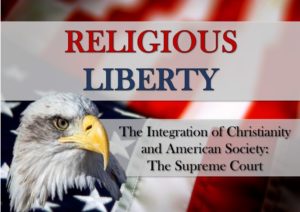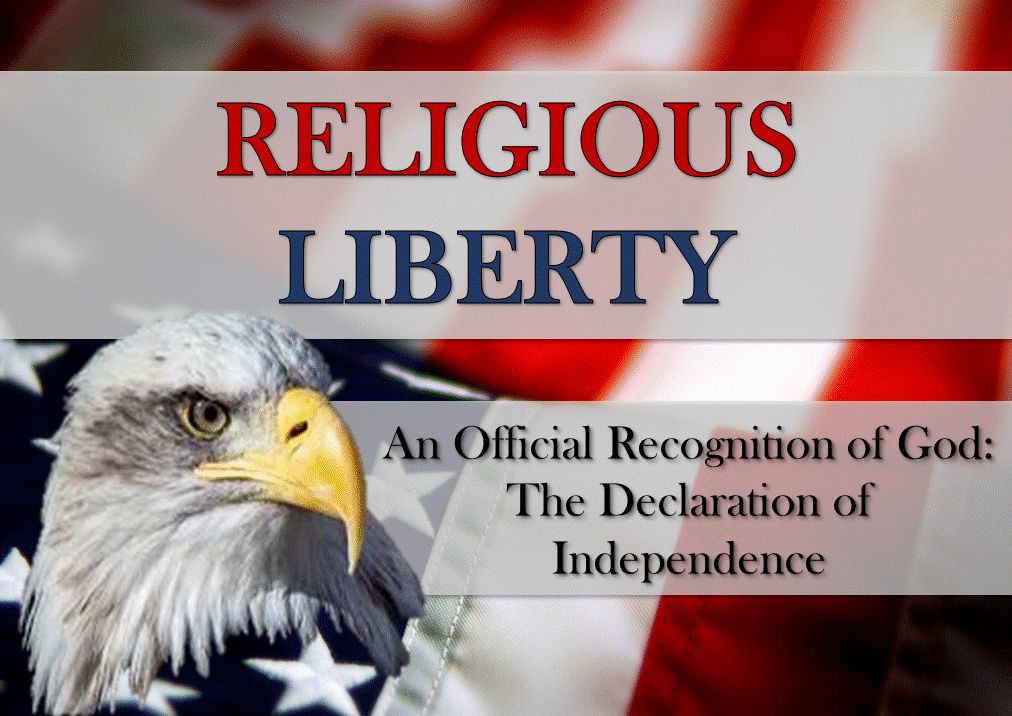 In this series of articles on religious liberty, we have looked at several important figures in our nation’s history. Their actions and writings demonstrate that religious liberty was meant to be the freedom of people to believe and practice the Christian religion.
In this series of articles on religious liberty, we have looked at several important figures in our nation’s history. Their actions and writings demonstrate that religious liberty was meant to be the freedom of people to believe and practice the Christian religion.
We will conclude by observing the claims of the agency that many people view (incorrectly) as the highest law-making agency in the land: the Supreme Court of the United States. We know that in recent years the Supreme Court justices have manifested a distaste for Christianity and biblical morals. However, was this always the case?
The fact that the America has an overtly religious history was obvious even to the Supreme Court of past decades. In Church of the Holy Trinity v. United States in 1892, the justices plainly stated that Americans are a “religious people.”[i] They substantiated this claim by hearkening back to the commission to Christopher Columbus which stated the hope that new lands would be discovered by the assistance of God. Lest we should take their words simply as a reference to the generic morality of Americans, the Court explicitly stated that “this is a Christian nation.”[ii]
In Vidal v. Girard’s Executors in 1844, the Supreme Court declared that the Christian religion should not be “maliciously and openly reviled and blasphemed against, to the annoyance of believers or the injury of the public.”[iii] As late as 1931, the Court continued to recognize that “we are a Christian people.”[iv]
We must be careful not to interpret the Supreme Court’s recognition of the Christian heritage of America to mean that the Court believes that the United States should operate as a theocracy or a massive church. Rather, it recognizes the impracticality of the absolute bifurcation of religion and government. In the Zorach v. Clauson case of 1952, the Court acknowledged that although the separation between church and state must be “complete and unequivocal,” the separation is not required “in every and all respects.” Rather, “there shall be no concern or union or dependency one on the other.”[v] In other words, the state should not run the church and the church (as an organization) should not run the state.
The ruling then goes on, however, to describe the impracticality of complete alienation of church and state. In such a scenario, we would have to prohibit fire and police services to churches, ban prayers in legislative sessions, and even disallow the traditional cry “God save the United States and this honorable court” that opens the Supreme Court sessions.
Furthermore, the Court declared that rejecting a government that “respects the religious nature of our people and accommodates the public service to their spiritual needs” would result in “preferring those who believe in no religion over those who do believe.”[vi] That makes sense if you think about it. If we effectively remove the imposition of religion on non-religious people, would it then be right to impose non-religion on religious people?
The Supreme Court of yesterday got it right when they recognized that Christianity serves as a fundamental part of our national DNA and to extricate it from society would be not only impossible, but unreasonable. May the Supreme Court of today do the same.
Previous article: An Official Recognition of God: The Declaration of Independence
See the other articles about religious liberty
[i] Church of the Holy Trinity v. United States 143 U.S. 457, 465 (1892).
[ii] Ibid., 472.
[iii] Vidal v. Girard’s Executors 43 U.S. 127, 198 (1844).
[iv] United States v. Macintosh 283 U.S. 605, 625 (1931).
[v] Zorach v. Clauson, 343 U.S. 306, 312 (1952).
[vi] Ibid., 343 U.S.:314.



